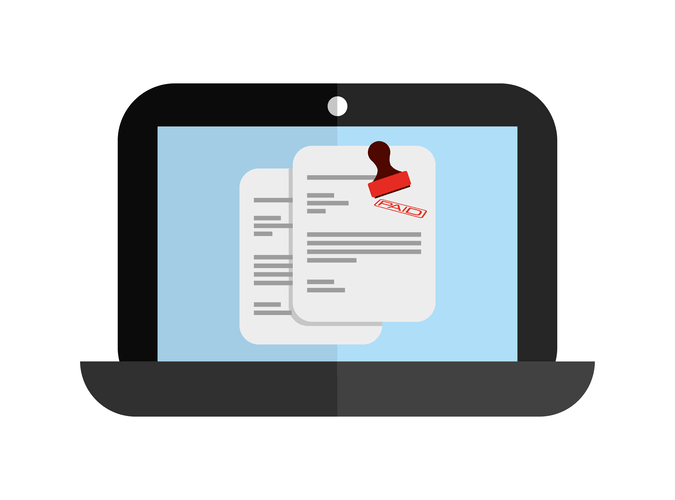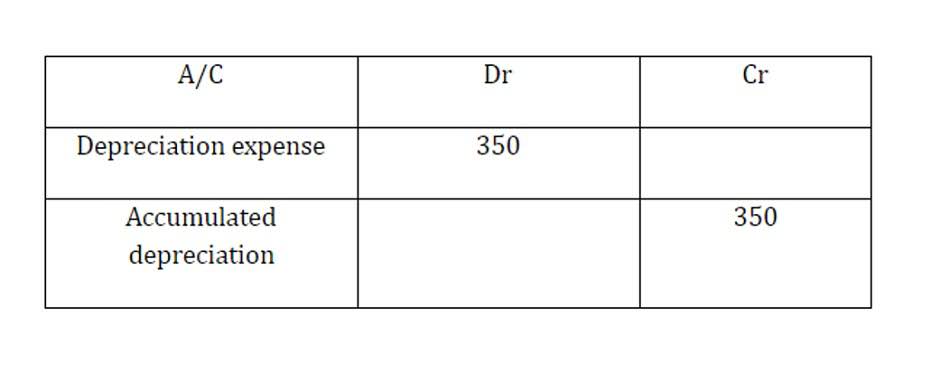Category: Bookkeeping

While accrual accounting recognizes transactions when they occur, the cash basis only records them when cash is exchanged. This variance impacts the accuracy of financial reporting and the timing of expense recognition, highlighting the significance of choosing the suitable accounting method. Accrued payroll salary refers to the amount of money a company owes to its employees for work performed but not yet paid, recorded as a liability on the company’s balance sheet. This includes wages, salaries, and other forms of employee compensation for a specific pay period.
- This can cause payroll errors, which could feed into your income statements, balance sheets, and reported cash flow.
- Accrual entries impact the balance sheet and income statement, demonstrating the influence of these entries on accounting records and financial reporting processes.
- On 30th June 2021, the company prepared its financial statements for the year ending on 30th June 2021.
- It ensures that all payroll-related transactions are accurately recorded and reconciled, making the payroll process more efficient and reliable.
- The management of accrued commissions speaks to the company’s commitment to fair and transparent compensation practices, driving employee satisfaction and motivation.
Accounts

This accrual may be accompanied by an additional entry to accrue for any related payroll taxes. When a company is engaged in a fast close, the payroll clerk may not want to spend the time to compile hours worked information at the end of an accounting period for the accrual calculation. Instead, the clerk can estimate hours worked based on historical records of hours worked per day, or the standard number of working hours per day. These estimates can be incorrect if the actual hours worked are unusually high or low, but the difference from the estimate used in the accrued payroll figure is usually immaterial. Until it’s paid, accrued payroll is recorded as a liability on the company’s balance sheet, because it indicates the financial obligation a company has towards its employees and corresponding government agencies. This makes accrued payroll a critical component of managing an organization’s financial reporting and budgeting.
Advanced Payroll Accrual Concepts
Accrued wages refer to the earnings that employees have worked for but have not yet received, typically documented for accounting purposes. Bonuses, often linked to performance, are additional forms of compensation provided to employees. Overtime pay accrues when employees work more than their standard working hours. This journal entry will recognize the liability of the business by recording outstanding salaries. Accrued payroll helps business owners and payroll managers to think in terms of “what do we owe? ” With this approach, you can Accounting for Churches better allocate business costs and avoid unexpected payments, which will help you invest resources into company development and growth more confidently.
When should a company pay off accrued payroll?
Instead of tracking expenses once you’ve processed them, accrued payroll includes expenses or debits that are still pending. Including these pending expenses gives you a more accurate understanding of the money flow in each pay period. The alternative to accrual accounting is cash-based accounting, where employers record expenses only when cash payments or transactions occur. Some small businesses prefer this type of accounting because it is simple, though it may not be suitable for a large company that needs a more accurate depiction of its liabilities.
- By integrating these innovative tools, HighRadius not only enhances the accuracy of payroll journal entries but also ensures a seamless, efficient reconciliation process.
- Lastly, be sure to add the total amount that you offer your employees in monthly PTO to your accrued payroll costs.
- It’s also important to mark PTO under accrued payroll in case an employee decides to leave the company.
- Accrued salaries highlight the obligation that the company has incurred for the labor provided by its employees.
- To keep tabs on accrued payroll and gain insight into your business’s finances, keep in mind these sources of payroll accrual.
What does Accrued Salaries mean in accounting?
The accrued salaries entry is a debit to the compensation (or salaries) expense account, and a credit to the accrued wages (or salaries) account. The accrued wages account is a liability account, and so appears in the balance sheet. If the amount is payable within one year, then this line item is classified as a current liability on the balance sheet.
What Does Accrued Salaries Mean?

The disparity between these accounting methods extends to the recognition of revenue and expenses on the income statement. Accrual accounting accounts for revenue when it is earned, regardless of when the cash is received, providing what does accrued salaries mean a more accurate picture of a company’s financial performance. The primary difference between accrual and cash basis of accounting lies in the timing of revenue and expense recognition.
Track and manage time
Accrued salaries play a vital role in presenting a true and fair view of a company’s financial position as they represent the amount of wages owed to employees at the end of an accounting period. These accrued salaries are crucial for accurately reporting the liabilities on the balance sheet. By utilizing the accrual method, the income statement reflects the actual wage expenses incurred, thus improving the accuracy of the financial performance portrayal by aligning expenses with the related revenue. Accrued salaries are recorded as a liability on the balance sheet, usually under current liabilities, as they are expected to be settled within a short period, typically within a year.
Management

These accrued liabilities are reported on the balance sheet, providing stakeholders with a comprehensive view of the company’s financial obligations. On the income statement, accrued salaries contribute to the wage expenses, impacting the overall profitability and demonstrating the true cost of labor for the accounting period. Thus, accurate reporting of accrued salaries is crucial for a comprehensive understanding of a company’s financial health. Depending on the length of the payroll cycle, it is less common to have any accrued payroll for salaried employees, since they are cash flow frequently paid through the end of the accounting period. The following exhibit shows a sample entry that breaks out the accrual for direct labor (part of the cost of goods sold), while all other wages earned are listed in the wages expense line item.

Types of accrued payroll
On the actual date of the payroll payment, July 5, the organization would make a reversing entry to clear these accrued liabilities and recognize the cash outflow. The two-step process of accruing payroll expenses and then reversing the accrual when the related payment is made helps in maintaining very accurate financial records and in compliance. This process allows Company X to depict a more accurate representation of its financial position by matching expenses to the period in which they are incurred, rather than when they are paid.
.jpg)
One is a simple strategy that will only work with certainrestrictions. It requires just a single aggregation step and a singledisaggregation step. This strategy, however, requires that aggregation anddisaggregation steps be performed between every two subsequent SOLVEstatements.
Similar content being viewed by others
In both cases, the horizon-based solution obtained from a previous solvewill not be accurate when you move the planning interval. Thus, youshould follow a generic strategy which adds an additional disaggregationand aggregation step to every iteration. In this section you will find two strategies for implementing a rollinghorizon.
- In both cases, the horizon-based solution obtained from a previous solvewill not be accurate when you move the planning interval.
- This section outlines the steps that are required toimplement a model with a rolling horizon, without going into detailregarding the contents of the underlying model.
- It requires just a single aggregation step and a singledisaggregation step.
- For this non-standard optimization problem with optimal stopping decisions, we develop a dynamic programming formulation.
- The term rolling horizon is used to indicate that a time-dependentmodel is solved repeatedly, and in which the planning interval is movedforward in time during each solution step.
- Various generalizations are shown to be captured by straightforward modifications of our model.
Access this article
Mathematical optimization problems including a time dimension abound. For example, logistics, process optimization and production planning tasks must often be optimized for a range of time periods. Usually, these problems incorporating time structure are very large and cannot be solved to global optimality by modern solvers within a reasonable period of time. This approach aims to solve the problem periodically, including additional information from proximately following periods.
- Sorry, a shareable link is not currently available for this article.
- The main idea of our approach is that the usefulness of rolling horizon methods is, to a great extent, implied by the fact that forecasting the future is a costly activity.
- This strategy, however, requires that aggregation anddisaggregation steps be performed between every two subsequent SOLVEstatements.
- Usually, these problems incorporating time structure are very large and cannot be solved to global optimality by modern solvers within a reasonable period of time.
- It is then sufficient to make the horizon sufficiently large so as tocover the whole time range of interest.
- The algorithm to implement the rolling horizon can be outlined asfollows.
A rolling-horizon approach for multi-period optimization
.jpg)
The term rolling horizon is used to indicate that a time-dependentmodel is solved repeatedly, and in which the planning interval is movedforward in time during each solution step. With the facilitiesintroduced in the previous sections setting up such a model isrelatively easy. This section outlines the steps that are required toimplement a model with a rolling horizon, without going into detailregarding the contents of the underlying model.
.jpg)
About this article
In this paper, we develop a theoretical framework for the common business practice of rolling horizon decision making. The main idea of our approach is that the usefulness of rolling horizon methods is, to a great extent, implied by the fact that forecasting the future is a costly activity. For this non-standard optimization problem with optimal stopping decisions, we develop a dynamic programming formulation. We also provide a careful interpretation of the dynamic programming equations and illustrate our results by a simple numerical example. Various generalizations are shown to be captured by straightforward rolling horizon approach modifications of our model.
The algorithm to implement the rolling horizon can be outlined asfollows. It is then sufficient to make the horizon sufficiently large so as tocover the whole time range of interest. Sorry, a shareable link is not currently available for this article.
In this paper, we first investigate several drawbacks of this approach and develop an algorithm that compensates for these drawbacks both theoretically and practically. As a result, the rolling horizon decomposition methodology is adjusted to enable large scale optimization problems to be solved efficiently. In addition, we introduce conditions that guarantee the quality of the solutions. We further demonstrate the applicability of the method to a variety of challenging optimization problems. It proves possible to solve large-scale realistic tail-assignment instances efficiently, leading to solutions that are at most a few percent away from a globally optimum solution.
Engaging with financial advisors or consultants can offer expert guidance tailored to your business’s unique needs. Small businesses can build a robust financial framework that supports decision-making and drives business success by focusing on these areas. A proactive approach to enhancing finance ensures your business remains competitive and resilient in an ever-evolving marketplace. $2,000,000 in paid ads and $1.0 CPC means that there are at least 2,000,000 clicks on your ads per year. Assuming 10% click-through-rate, this means there are at least 20 million impressions per year for your keywords. Data analysis is a core AI use case for startups, allowing them to analyze large datasets, uncover patterns, and support data-driven decision-making.
Information About Product Costs, Expenses, and Potential Market or Price Fluctuations
My final piece of advice is to make sure you visualize monthly sales with a chart or graph. The best thing you can do is keep your ear to the ground and be ready to adjust expenses or sales when any changes appear to make traction. It’s easier to think about sales this way rather than just in dollars (or yen, or pounds, or rand, etc.). Some businesses, for instance, will add a score to the conversion probability of their various prospects according to the gut feeling of their salespeople. They often have a good idea of how likely they are to close a particular deal and can use educated guesses to assess the situation.
Operating profit vs EBIT: What’s the difference?
This revenue projection template is best for B2B organizations or businesses selling to other businesses or organizations rather than business-to-consumer (B2C) organizations. It can also be used for direct sales prospecting activities and businesses that submit business proposals in response to solicitation requests. Download our free sales projection format in Excel and Google Sheets to save time and effort. A multiproduct forecast template can help track and predict sales across multiple products, prioritize efforts, and optimize inventory and resource allocation. Let’s assume we are a marketplace business selling healthcare supplies to residential care businesses in the UK.
AI in customer service: Automate support to boost satisfaction
Sales reps need a way to stay organized, track leads, flag potential issues, and signal when leads have been closed. CRMs don’t just make sales rep’s jobs easier; it makes them far more effective. In fact, using the right CRM can improve sales rep productivity by up to 30%. What steps will your sales team take to move a customer through the sales process?
A Roadmap to the ISO 27001 Certification Process
That’s precisely why it’s crucial if you’re managing a startup, especially since it’s full of uncertainty at first. However, take note that sales forecasting may not be as accurate as you may think, so take it with a grain of salt. As stated earlier, understanding and defining the status quo bias in sales , and analyzing existing data is one of the essential steps in creating a sales forecast. In other words, past data will tell you the numbers that you should reach in your future projects. Use this revenue projection template to generate sales projections if your business sells multiple products. Through this type of template, you can compare the estimated performance of specific products by tracking the units sold and the price per unit.
Now that we’ve covered the importance of inventory and revenue forecasting for a startup, let’s dive into what you’ll need to get started. Sales forecasting software can use historical business data and trends to create a report of expected sales revenue. Sales forecasts are what will help you keep your startup alive and know you have the resources to go after big leads or take on new team members. Even if that’s just asking your sales team what’s in their pipeline and whether or not they think they’ll close. If you’re looking for a crystal ball to see what your business will look like in a year from now, there are few things as powerful as accurate sales forecasting.
- Depending on the method used, there can be some very real obstacles to getting insights you can apply to your unique business needs.
- It can include predicted volume, sales by account or product, and rate of growth.
- Your sales projections are estimates of the number of goods and services you believe you can sell over a period of time.
- If you’re a new business look to your competitors to see how they act during specific times of the year to identify these trends earlier on.
- By analyzing market trends and historical data, startups can identify patterns and make adjustments accordingly.
This forecast indicates how you expect the product to perform based on units sold and the price per unit monthly. Sales teams can use a month-to-month sales forecast Excel template to track short-term performance and adjust tactics based on real-time data. The month-to-month sales projection template shows sales projections for a year divided into monthly increments. A Accounting For Architects budget sales forecast template shows expense estimates in relation to revenue, allowing you to calculate how much you can spend during a specified period.
Businesses that skip this step lose insights that could make forecasts sharper and decisions easier. It includes all variables outside the company that can influence sales. These factors come from the company’s environment and are beyond its control. Unlike internal data, exogenous data is unpredictable and needs to be filtered carefully. It includes information directly tied to the sales process—data that is already recorded, tracked, or easy to collect if needed. That means listing every product and service, no matter how big or small.


